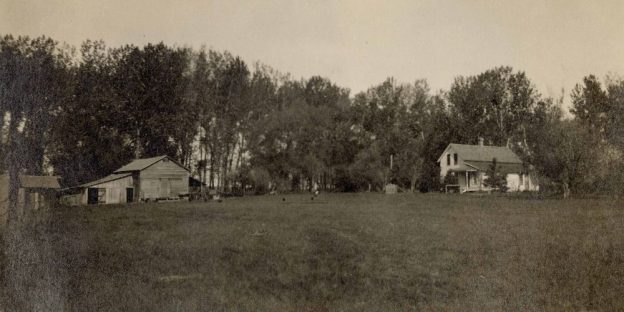Ole Edvart Rølvaag was a Norwegian-American professor, thinker, novelist, and figurehead. He left his home on the island of Dønna, Norway, in 1896, aged 20, to work in America for a number of years and return to Norway with the wealth he had accumulated. However, he discovered that the so-called “American dream” he had heard so much about from fellow Norwegian emigrants was not all that it was cracked up to be. After spending a few years on his uncle’s farm doing hard labor, Rølvaag began to notice the great loss that these Norwegian-Americans had endured, spiritually and culturally.
Explore Ole E. Rølvaag’s Life
Giants in the Earth (I de dage)
First published in Norwegian as two volumes in 1924 and 1925. In 1927, the the English version was published. The novel follows a pioneer Norwegian immigrant family’s struggles with the land and the elements of the Dakota Territory as they try to make a new life in America.
Part of a trilogy, it had two sequels: Peder Victorious (Peder Seier) in 1928 and Their Fathers’ God (Den signede dag) in 1931. The books were based partly on Rølvaag’s personal experiences as a settler as well as the experiences of his wife’s family who had been immigrant homesteaders in South Dakota The novels depicts snow storms, locust, poverty, hunger, loneliness, homesickness, the difficulty of fitting into a new culture, and the estrangement of immigrant children who grow up in a new land. This resource guide is designed to help think critically about Rølvaag’s epic novel by comparing passages with the primary source material found in in the Ole E. Rølvaag papers housed at NAHA.
Explore Themes from Giants in the Earth
Explore Other Resources
- Ole E. Rølvaag Papers
- Ole E. Rølvaag Digital Collection
- NAHA Collection Database
- Norwegian-American Studies
Funding for the digitization of the O.E. Rølvaag papers is provided to the Norwegian-American Historical Association through the Minnesota Arts and Cultural Heritage Fund, a component of the Minnesota Clean Water, Land and Legacy constitutional amendment, ratified by Minnesota voters in 2008. Commercial use or distribution of these digital materials is not permitted without prior permission of the Norwegian-American Historical Association.

This resource guide was made possible by research conducted by Caroline Flaten (St. Olaf College), Helen White (St. Olaf College), Caitlin Sackrison (PhD candidate at Brandeis University), and overseen by NAHA Archivist Kristina Warner.

